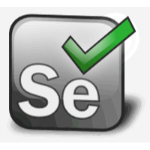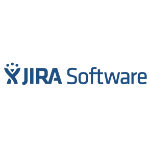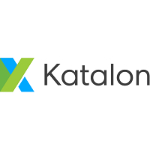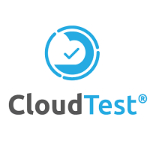TechnologyCounter provides genuine, unbiased real user reviews to help buyers make informed decisions. We may earn a referral fee when you purchase through our links, at no extra cost to you.
List of 15 Best Software Testing Tools
Showing 1 - 15 of 78 productsSelenium is a and versatile open-source software widely used in the field of automated testing. With its user-friendly interface and robust functionality, it has become a popular choice for developers and QA professionals. Its ability to support mult...Read Selenium Reviews
Jira is a project management tool that is trusted by thousands of teams worldwide. With its intuitive interface and customizable features, Jira helps teams of all sizes stay organized, collaborate efficiently, and deliver high-quality results. Whethe...Read Jira Reviews
Looking for a powerful platform to test your web applications? Look no further than LambdaTest. This versatile cloud-based tool allows you to perform cross-browser compatibility testing with ease, ensuring a seamless user experience for your website...Read LambdaTest Reviews
TestRail, the ultimate test management tool for teams of all sizes. With its intuitive design and powerful features, TestRail streamlines the testing process and helps teams deliver high-quality software faster. Say goodbye to manual tracking and div...Read TestRail Reviews
Katalon Studio is a robust and versatile automation testing tool designed for web and mobile applications. With a user-friendly interface and powerful features, it allows testers to quickly create and execute automated tests without any coding knowle...Read Katalon Studio Reviews
Postman Pro is a software that streamlines the process of API development and testing. As a copy writer, I am excited to introduce this powerful tool that simplifies APIs for developers and promotes collaboration within teams. With its user-friendly...Read Postman Pro Reviews
VectorCAST is a leading software testing solution trusted by developers worldwide to ensure the quality and reliability of their embedded systems. With its advanced capabilities and user-friendly interface, VectorCAST streamlines the testing process...Read VectorCAST Reviews
Zephyr is a software for streamlined is a project management. With its intuitive interface and powerful features, Zephyr is here to revolutionize the way you handle your projects. Whether youre a small business owner or a large enterprise, Zephyr is...Read Zephyr Reviews
Ranorex is a software tool designed for automated testing of desktop, web, and mobile applications. It offers a user-friendly interface, advanced features, is a testing capabilities, making it a top choice for software testing professionals. With int...Read Ranorex Reviews
Morae is a all-in-one usability testing tool designed for top-notch user experience research. Equipped with powerful features and a user-friendly interface, Morae streamlines the testing process and provides invaluable insights for businesses to impr...Read Morae Reviews
QATTS is a software designed to enhance your businesss quality assurance process. Developed with the latest technology and features, QATTS streamlines your quality control, testing, and reporting to save time and maximize efficiency. Say goodbye to m...Read QATTS Reviews
Akamai CloudTest is a software designed to enhance your web performance testing capabilities. With its advanced features and user-friendly interface, CloudTest simplifies the process of testing, optimizing, and monitoring your web applications. Say g...Read Akamai CloudTest Reviews
Xamarin is a cross-platform development tool designed to create native mobile, desktop, and web applications using a shared codebase. With its advanced features and seamless integration with popular programming languages, Xamarin allows developers to...Read Xamarin Reviews
TestingWhiz is a is a testing tool designed to simplify and streamline your software testing process. user-friendly interface features make it the perfect choice for businesses of all sizes. With TestingWhiz, you can ensure the quality and reliabilit...Read TestingWhiz Reviews
QMetry is a leading software provider in the field of quality assurance and test management. With a focus on efficiency, accuracy, and customer satisfaction, QMetry offers a wide range of solutions for enterprises of all sizes. Its reliable software...Read QMetry Reviews
- What Is Software Testing Tools?
- Top Reasons Why Businesses Need Software Testing Tools?
- What Are the Top Key Features of Software Testing Tools?
- What Are the Top Benefits of Software Testing Tools?
- What Are the Steps to Choose the Right Software Testing Tools?
- What Are the Types of Software Testing Tools for Different Industries?
- What Are the Technology Trends for Best Software Testing Tools?
- What Are the Deployment Options for Software Testing Tools?
What Is Software Testing Tools?
Software testing tools are automated tools that aid in the detection and identification of potential flaws or defects within the software being developed. These tools are utilized for the purpose of doing comprehensive testing on various software programs and systems.
The testing process is automated through the utilization of specialized scripts, resulting in the generation of a comprehensive report encompassing all software components. The utilization of automated testing expedites the whole procedure in comparison to manual testing.
The process of running code against various conditions aids in the identification and elimination of faults or problems. These techniques can additionally aid in the identification of potential dangers that may be present inside the system.
Tools used for software testing are highly beneficial to developers as they streamline the process of code analysis, eliminating the need for manual examination of each line of code. Additionally, these tools serve as effective safeguards against potential software defects. In addition, they possess significant utility in the realms of software program debugging and maintenance.
In general, the best software testing tools serve as a viable method for assessing the quality of newly developed software programs and systems, with the aim of identifying and rectifying any existing flaws, faults, or potential dangers. The testing procedure is therefore significantly enhanced in terms of efficiency and speed compared to the manual process.
Top Reasons Why Businesses Need Software Testing Tools?
1. Testing tools offer comprehensive reports that aid in identifying application faults, emphasizing various areas of concern, and monitoring the testing process.
2. The best software testing tools include the capability to automate operations that are repetitive in nature, hence leading to time and cost savings for enterprises.
3. Software testing solutions offer valuable insights into the manner in which consumers engage with an application, thereby facilitating business managers in comprehending the user experience associated with their product.
4. Tools used for software testing offer a platform for enterprises to discern the origins of glitches and flaws within an application.
5. Top software testing tools have the capability to offer comprehensive information regarding the performance of applications, thereby assisting businesses in enhancing their operations and maintaining uniformity.
6. Testing tools enable organizations to effectively monitor the performance of their applications in real-world scenarios, thereby assuring optimal levels of dependability.
7. Tools used for software are utilized to identify specific areas inside the program that may require modification in order to enhance the overall user experience.
8. The utilization of testing tools has the potential to enhance the efficiency of testing and deployment processes for new features.
9. Software testing solutions have the capability to automate processes, hence facilitating the enforcement of best practices. This automation feature assists firms in ensuring compliance with a wide range of standards.
10. The best software testing tools provide enterprises with the capability to replicate challenging or unfeasible settings, such as hardware and software environments, for the purpose of simulation.
11. Testing solutions offer comprehensive error logging capabilities that enable firms to conduct deep analysis and effectively mitigate testing expenses.
12. Top software testing tools has the capability to produce diverse test cases with the aim of augmenting test coverage.
13. Tools used for software are utilized by enterprises to effectively monitor and manage various versions, thereby guaranteeing that updates undergo rigorous testing.
14. Software testing solutions are capable of doing regression testing for enterprises, thereby ensuring the thorough evaluation of modifications.
15. The best software testing tools are utilized to uphold elevated levels of performance for company applications, hence guaranteeing consumer contentment.
What Are the Top Key Features of Software Testing Tools?
The top key features of software testing tools include:
1. Automation Support: Automation assistance is employed for the execution of tests across a diverse array of platforms, encompassing web browsers, cellphones, and tablets. The implementation of this approach enhances the efficiency of the testing process through the reduction of manual labor.
2. Test Lab Management: The best software testing tools facilitates the administration of diverse testing settings and the centralized management of test volunteers.
3. Test Reporting: The inclusion of reporting elements facilitates expeditious and effortless assessment of test outcomes. The reports created provide valuable insights into areas that require enhancement.
4. Test Lifecycle Management: Tools used for software facilitates the monitoring of examinations and the categorization of assessments into coherent clusters.
5. Distributed Execution: Top software testing tools allows for the concurrent execution of tests on several devices. This facilitates comprehensive testing and contributes to the reduction of expenses and time constraints.
6. Security Testing: This functionality allows software testers to execute tests in order to verify the safety and security of apps.
7. Performance Testing and Monitoring: These characteristics facilitate the monitoring of performance across various devices and configurations with the aim of identifying and addressing performance bottlenecks.
8. Data Management: Tools used for software enables the storing, backup, and retrieval of test data to assist the re-execution of tests.
9. Plug-in Support: The best software testing tools facilitates the incorporation of external services, such as defect tracking systems, analytics tools, and other related services, into the testing procedure.
10. Test Automation Language Support: Top software testing tools enables the creation of test scripts using the preferred programming language, hence facilitating the optimization of the testing procedure through the reduction of human labor.
What Are the Top Benefits of Software Testing Tools?
1. Reduced cost: The utilization of automated testing methods has the potential to decrease the duration required for product testing, hence resulting in a reduction of associated expenses.
2. Increased effectiveness: Software testing tools have the capability to identify and highlight potential faults and hazards, thereby enhancing the overall efficiency of the testing process.
3. Improved accuracy: Automated software testing solutions have been found to yield more dependable outcomes in comparison to manual testing, hence significantly mitigating errors.
4. Increased coverage: Automated testing solutions possess the capability to assess a wider array of scenarios, hence offering a more extensive coverage of potential faults.
5. Mitigating Risks: Automated testing tools possess the capability to detect potential hazards at an earlier stage in the development process, hence enabling their timely mitigation prior to deployment.
6. Reusable Resources: The reusability of automated tests with minimum modifications facilitates the achievement of broader test coverage under compressed timeframes.
7. Improved repeatability: Automated tests provide the characteristic of repeatability, allowing them to be done multiple times with ease, hence facilitating the verification of consistent quality.
8. Easier maintenance: Automated tests possess the capability to be customized and updated as required, without necessitating manual intervention.
What Are the Steps to Choose the Right Software Testing Tools?
1. Determine the kinds of tests that will need to be conducted: Prior to the selection of software testing tools, it is imperative to ascertain the specific categories of tests that will be required to be conducted. Which type of testing will be conducted: functional testing, load testing, performance testing, or user acceptance testing?
2. Identify what features are needed: Once the categorization of tests has been established, the subsequent phase involves evaluating the essential characteristics that software testing tools must possess in order to ensure their efficacy.
Essential attributes inherent in software testing tools encompass the capacity to generate data-driven tests, an intuitive user interface, the capability to replicate failure scenarios, scalability, reporting functionalities, and seamless connection with other development tools.
3. Consider the cost: After identifying the essential aspects of the best software testing tools, it is imperative to consider cost as an additional factor in the selection process.
Organizations ought to conduct an evaluation of their willingness to allocate financial resources towards the acquisition of necessary features, while also engaging in a comparative analysis of costs across competing entities.
4. Review the support and documentation: The support and documentation for the Software testing solutions should be checked to determine the effectiveness and availability of assistance should any issues develop throughout the test procedure
5. Make a decision: The ultimate stage entails reaching a conclusion by considering all the preceding criteria. In order to make an optimal choice, it is important to conduct a comparative analysis of various software testing tools, considering factors such as cost, functionality, and support.
What Are the Types of Software Testing Tools for Different Industries?
A diverse range of software testing tools is accessible to cater to various sectors. The below enumeration encompasses a diverse array of software testing tools that are employed across various sectors:
1. Automation testing tools: These tools possess use in the automation of test processes and find application across many industries. Several widely used automated testing tools in the field include Selenium, Cucumber, and Robotium.
2. Performance testing tools: These instruments assess the performance of a system when subjected to a specific load. Two examples of performance testing tools are Apache JMeter and LoadRunner.
3. Security testing tools: Software testing solutions are employed to assess the system for various security vulnerabilities, including those originating from malevolent actors. Prominent security testing tools encompass Wireshark, Burp Suite, and Nmap.
4. Usability testing tools: These tools are employed for the purpose of evaluating the usability of a system and the experience of its users. These assessments have the capacity to discover and address usability flaws and user errors. Two often used tools in the field are Optimal Workshop and UsabilityHub.
5. Compatibility testing tools: Tools used for software are capable of conducting tests and verifying the functionality of a system on various platforms, browsers, and devices. Commonly used compatibility testing tools in the field include BrowserStack and Device Lab.
What Are the Technology Trends for Best Software Testing Tools?
The software testing industry is characterized by a continuous process of evolution. Numerous novel techniques and technologies are now being developed with the aim of enhancing the efficacy of software testing and quality assurance.
There exist numerous technical trends pertaining to optimal software testing tools, encompassing:
1. Automated Testing: The development of automated testing tools aims to enhance the efficiency of software testing by the elimination of labor-intensive and monotonous manual procedures. Automated tools possess the capability to expedite and enhance the flaw identification process for testers with a high degree of efficiency and precision.
2. Cloud Computing: The utilization of cloud computing is experiencing a notable surge in popularity due to its facilitation of streamlined storage, efficient management, and convenient accessibility to substantial volumes of data across various devices connected to the internet.
Furthermore, it allows testing teams to efficiently expand their resources as necessary, without the need for new investments in equipment.
3. Big Data Analytics: The utilization of big data analytics has witnessed a notable surge in its application for the purpose of evaluating, visualizing, and reporting outcomes of software testing. This enables testers to efficiently get valuable information and formulate strategic choices.
4. IoT Testing: The proliferation of the Internet of Things (IoT) necessitates the utilization of specialized testing tools capable of accommodating diverse categories of interconnected devices and data sources. Internet of Things (IoT) testing tools facilitate the testing process for testers by enabling them to efficiently evaluate the complete ecosystem.
5. AI Testing: The utilization of artificial intelligence (AI) is increasingly prevalent within the realm of software testing. Artificial intelligence (AI)-enabled testing solutions possess the capability to generate test scenarios, acquire knowledge from data, and execute tests autonomously, without the need for human involvement.
What Are the Deployment Options for Software Testing Tools?
The available deployment choices for software testing tools are typically contingent upon the specific characteristics and intricacy of the instrument in question.
In the realm of software testing, tools used for software is commonly observed that testing tools can be categorized into three distinct deployment scenarios, namely on-premises, cloud-based, or hybrid configurations.
1. The deployment of Software testing solutions on-premises entails the installation and execution of the tool on one's own computer or servers. The utilization of on-premises solutions offers several benefits, including enhanced security measures, efficient infrastructure maintenance and control, as well as the ability to customize solutions to meet specific requirements.
There are several drawbacks associated with this situation, such as the financial burden of acquiring the necessary equipment and the considerable investment of time and resources required for effectively overseeing the infrastructure.
2. Cloud deployment refers to the utilization of a cloud-based solution wherein the software is hosted by a provider that is not directly involved in the operation of the software. The service provider offers assistance, the ability to handle increasing workload, and enhanced dependability, while the software undergoes continuous monitoring and updates to ensure it is up-to-date.
Cloud deployment has certain drawbacks, such as a reduced ability to customize due to the utilization of shared resources and less control over the underlying infrastructure.
3. Hybrid deployment refers to the integration of both on-premises and cloud deployment methodologies. The hybrid deployment model enables organizations to leverage the advantages offered by both on-premises and cloud deployment strategies.
One of the drawbacks associated with hybrid infrastructure is the inherent intricacy entailed in its establishment and administration. To summarize, the available deployment choices for software testing tools encompass on-premises, cloud-based, and hybrid deployment models.
When choosing the most suitable deployment option for a specific software testing tool, it is crucial to carefully analyze the advantages and disadvantages associated with each available choice.















